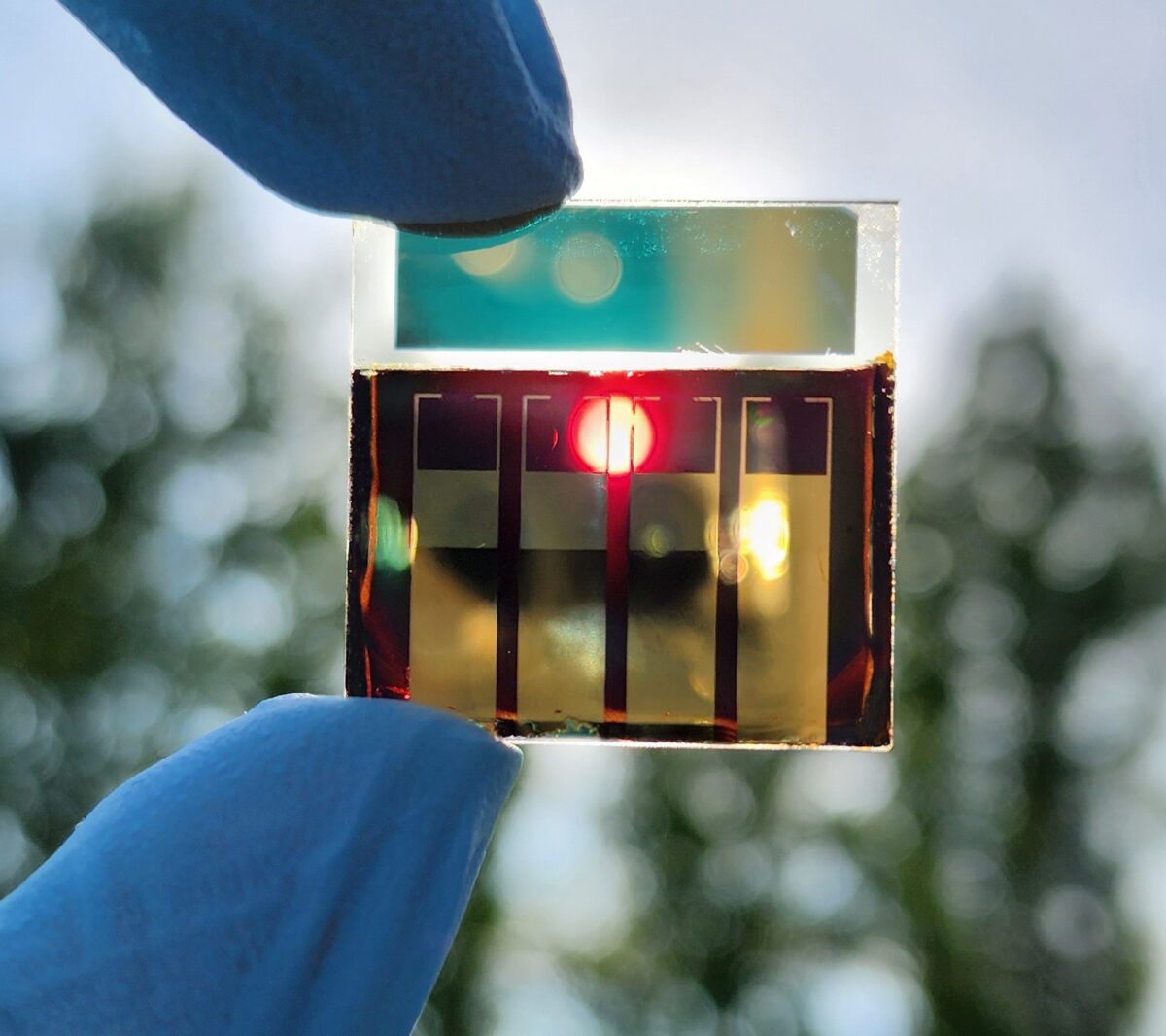The Korea Institute of Energy Research (KIER) announced that a group of its researchers has developed a semi-transparent perovskite solar cell intended for applications in bifacial perovskite-silicon tandem PV devices.
The semi-transparent solar cells achieved a certified efficiency of 21.68% and a record-breaking maximum efficiency of 22.02%. “This makes them the most efficient among the perovskite solar cells using transparent electrodes in the world,” the research group said. “Additionally, they showed remarkable durability, with over 99% of their initial efficiency maintained after 240 hours of operation.”
In the paper “Mitigating Intrinsic Interfacial Degradation in Semi-Transparent Perovskite Solar Cells for High Efficiency and Long-Term Stability,” published in Advanced Energy Materials, the scientists explained that the novelty of the semi-transparent device consists of the hole transport layer (HTL) based on spiro-OMeTAD doped with lithium bis(trifluoromethanesulfonyl)imide (LiTFSI), which is aimed at improving conductivity.
The academics claim they were able to overcome an intrinsic LiTFSI dopant-induced internal degradation mechanism which leads to undesired lithium-ion diffusion and would have been detrimental to the cell efficiency. They created a special configuration connecting the HTL with a molybdenum trioxide (MoO3) buffer layer and transparent conductive oxides (TCOs), with this structure ensuring the formation of lithium oxides Li2O2 at the HTL surface, which they said optimizes the oxidation time of the hole transport layer.
“Converting lithium ions into stable lithium oxides through optimized oxidation mitigates the diffusion of lithium ions, thereby enhancing the stability of the device,” they explained. “This discovery reveals that lithium oxide, previously considered a simple reaction byproduct, can play a crucial role in improving efficiency and stability.”
The research group built the cell with a substrate made of glass and indium tin oxide (ITO), a gold (Au) metal contact, an electron transport layer (ETL) based on tin(IV) oxide (SnO2), a perovskite absorber, the spiro-OMeTAD HTL, the MoO3 buffer layer, an indium zinc oxide (IZO) transparent conductive oxide film, and another Au metal contact.
Tested under standard illumination conditions, the cell achieved a power conversion efficiency of 21.68%, an open-circuit voltage of 1,139 V, a short-circuit current density of 23.74 A-cm2, and a fill factor of 80.1%. It was also able to retain approximately 99% of the initial efficiency after 400 h in dark storage.
This device was then integrated into two bifacial perovskite-silicon tandem solar cells with four-junction and two-junction configurations. The two devices achieved efficiencies of 31.5% and 26.34% respectively, under conditions where the reflected light from the rear was 20% of standard sunlight.
Both devices relied on a bifacial silicon heterojunction (HJT) bottom solar cell provided by China-based Jusung Engineering Ltd.
This content is protected by copyright and may not be reused. If you want to cooperate with us and would like to reuse some of our content, please contact: editors@pv-magazine.com.




I love the intelligence developing perovskite, especially bi-facially, for the future. I realize at this stage degradation is the concern which developers are at work on. I am wondering about perovskite’s future usage in a marine environment.
Europe has a mandate for fossil fuel free vehicles by 2035. The boating manufacturers seem at a loss to find answers. Seems silly to not maximize the number of solar panels, considering there’s lots of deck space, plus every boater puts biminis on their boat for sun sheltering. Manufacturers rather put a sunroof for ventilation and sunshine, then hide from the sun with ac! Now that transparent solar panels are being developed, the answers seem to be coming together.
Maybe the entire boat deck, cabin roof, aft salon sun sheltering covering are potential solar empowering sources with a mix of opaque and transparent solar panels. Maybe not for ocean crossings, but coastal and inland waters seems feasible.
What is the reality of my thinking?